Our Towns: Beaver County Industrial Museum captures region’s past with grit, heart
- Oops!Something went wrong.Please try again later.
- Oops!Something went wrong.Please try again later.
Editor's Note: Our Towns is a series looking at the people and places that are part of the communities of Beaver County, many of which often don't get a lot of attention from those outside their borders. It's a place for unheard voices and surprises about the county we share.
DARLINGTON — The modest two-story house at the end of Plumb Street is an unexpected time capsule, brimming with relics and tales from a bygone era.
The Beaver County Industrial Museum, settled just off Route 168 in Darlington, elaborately traverses the region’s manufacturing past – years when the Beaver Valley set precedents in glass, steel and emergent energy production.
Visitors are first greeted by the museum’s “resident steelworker,” a stately mannequin adorned with a heat-reflective aluminized jacket, flame-resistant pants, eye protection and a hard hat.
“If you worked by the blast furnace in the summer, you’d wear all these layers to keep the heat off you,” said Don Inman, 82, the museum’s board chairman and a former master electrician at J&L Steel’s Aliquippa plant.
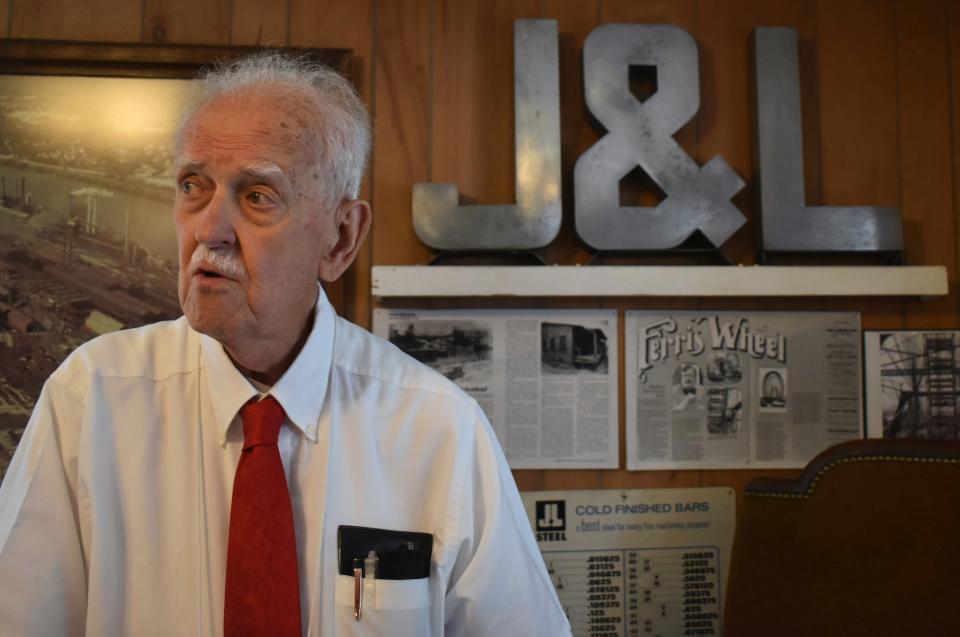
Inman’s collection of artifacts, films, photographs, magazines and newspaper articles spanning two centuries started in 1985, shortly after LTV Corp., which had taken over J&L Steel, shuttered its Aliquippa Works factory along the Ohio River.
“Stuff was disappearing; they were throwing a lot away,” said Inman, recounting one late-night effort to preserve memorabilia at the site that was cut short as crews demolished the building around him.
He operated out of Geneva College for years before moving the 501(c)(3) to its current location at 801 Plumb St. in Darlington, where the collection continued to expand and diversify.
“We’ve had people from as far as Germany come visit,” Inman said.
In addition to J&L, the museum features exhibits on Babcock and Wilcox Steel, Moltrup Steel and Crucible Steel. Donated artifacts include a still-functioning 800-pound steam whistle once used at Aliquippa Works to signal shift changes and fires, alongside employee badges, tin-plated business cards, a token “good for a half-stick of dynamite” and detailed models of blast furnaces and coke ovens.
An early 20th-century J&L Steel worker donated his miner’s light and hard hat, and a former J&L board member donated a lavish meeting chair once used by company president Tom Graham.
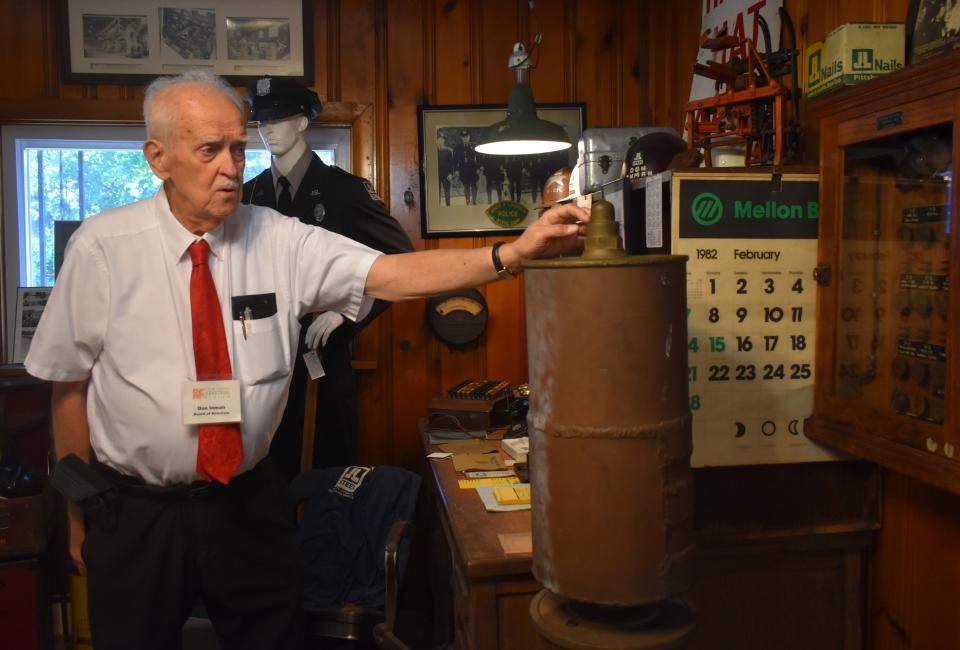
Another chair on display belonged to Pennsylvania Gov. Andrew Curtin, the state’s governor during the American Civil War and a close ally of President Abraham Lincoln. Curtin, Inman explained, played a key role in foiling a plot to assassinate Lincoln ahead of his first inauguration. After Curtin, the chair belonged to A. M. Byers, president of the A. M. Byers Co. which produced wrought iron and wrought iron pipes in Harmony Township, Inman said. A relative later donated the chair.
“Lincoln may have even sat in this chair,” Inman said. “We don’t know.”
In the heart of the museum rests Inman’s own hard hat, placed near an office chair that belonged to his father, who joined J&L in 1917 at 17 years old and stayed until his retirement. Like many items at the museum, his father’s chair is backed by a spirited personal story.
As Inman tells it, company leadership delivered new office chairs in the 1920s, but Inman’s (at times stubborn) father had no complaints about his initial seat and declined to switch.
“At some point, Jones III came to the mill; he’s the one who chose the chairs,” Inman said. “He saw the old chair and told the janitor to get rid of it. The janitor said ‘I can’t do that, that’s Mr. Inman’s chair; he’ll have a hissy fit.’”
After Jones insisted, the janitor – risking termination – stored the old chair in a main office attic until Inman’s father retired in the 1960s.
“He had the chair and a spittoon as his retirement gift,” he said. “That’s what makes our museum different, you’ve got all these stories.”
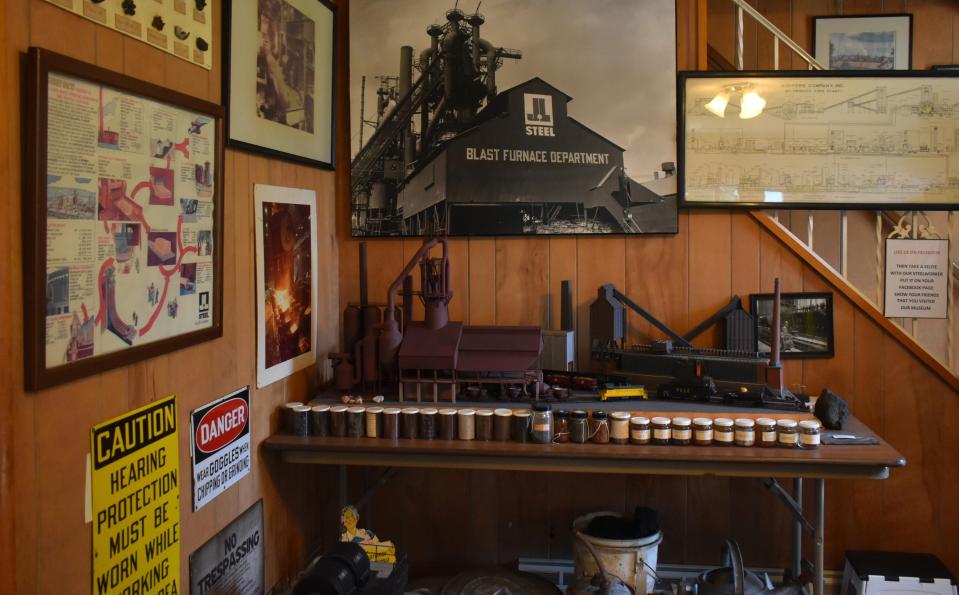
The museum houses an immense research library that includes employment records and more than 6,500 black and white photos from just J&L Steel. Students have spent hours in the library, preparing everything from research papers to dissertations using museum materials.
Hard-fought workers’ rights in Beaver County
The museum doesn’t gloss over the more harrowing aspects of Beaver County’s industrial past, particularly workers’ fight for economic security and safety protections amid hostility from company management.
Steelworkers often worked long, grueling hours alongside intense heat, noise and hazards. Those attempting to unionize risked termination, arrest, harassment, assault and even death. The museum features video footage of the 1933 Ambridge riots, during which a mass of armed sheriff's deputies attacked striking workers from a number of area industrial plants near the Spang-Chalfant Seamless Tube Co. plant in Ambridge.
Footage shows deputies shooting indiscriminately into the crowd of picketers, families, supporters, spectators and journalists. One man was reportedly killed and at least 15 others were injured.
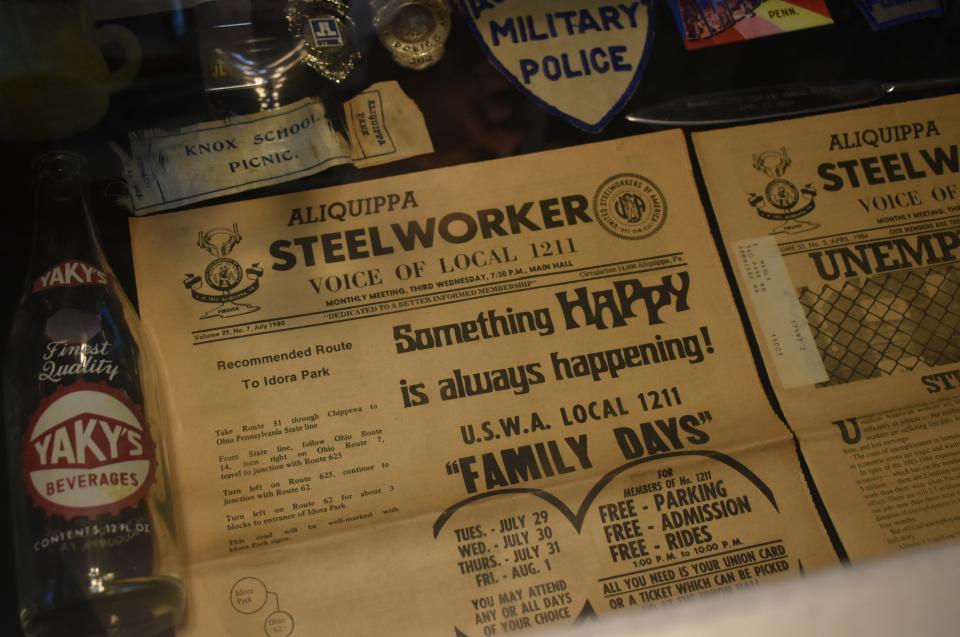
Beaver County workers shaped the U.S. labor movement, as illustrated by the landmark U.S. Supreme Court ruling in National Labor Relations Board vs. Jones & Laughlin Steel Corp. that codified workers’ right to unionize.
Other keepsakes include United Steelworkers Local 1211 newsletters and newspaper articles on pivotal labor strikes in Beaver County.
Beyond steel
“Before steel was the big employer in 20th century Beaver County, it was glass in the 19th century,” said Judy Cleary, a glass expert with the Beaver County Industrial Museum. “After the Civil War, glass production moved upriver and there were about 22 different glass companies in Beaver County at once.”
Glass factories employed thousands of men, women and children in the region and motivated families from as far as Italy, Germany and Austria to settle in the region, Cleary said.
The museum’s glass exhibit showcases distinctive forms of glassmaking found in products from H. C. Fry Glass, Co-Operative Flint Glass, Phoenix Glass and Mayer China – to name a few.
The uranium glass, or “vaseline glass,” shown under a blacklight is a crowd-pleaser among families, said Cleary. The pieces were made with very low levels of uranium, “about a tenth of one percent,” she said, adding, “If it was a little higher, it would register on a Geiger counter. But it’s not harmful.”
“I just love glass,” said Cleary, who moved to Beaver County in 1970. “When I came down, I was collecting Depression glass and one day someone said, ‘If you’re going to collect glass, you should collect local glass.’ And it all developed into this.”
Following Cleary’s presentation, Jim Clark gives a conceptual tour of the Shippingport Atomic Power Station – the nation’s first full-scale commercial nuclear power plant opened in late 1957.
Clark, a plant operator at Beaver Valley Power Station, will happily define fission and fusion and explain why Shippingport was ultimately chosen as the site of one of the world's first nuclear power plants devoted to peacetime purposes.
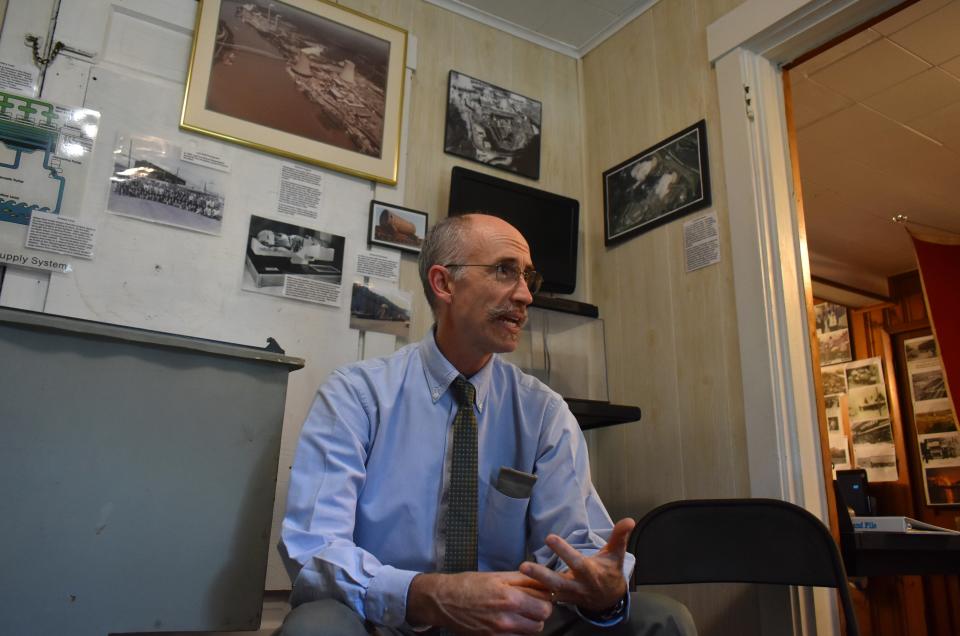
As Clark explains how the plant was "the jewel in the crown of (President Dwight Eisenhower’s) Atoms for Peace project,” attracting world dignitaries and top scientists, he asks visitors to take a seat on “the most comfortable chair you will ever find.”
“When you bring in important people like that, you need to have comfortable places for them to sit,” Clark said.
“If you’re the U.S. government, you bring in trainloads of expensive folding chairs and forget them,” he added, revealing “Camp David” written on the chair’s underside.
‘We’re totally out of room’
More than a decade after the museum collection outgrew its space at Geneva College, Inman said it has now outlived its current spot on Plumb Street.
Library rooms and storage closets are packed with monuments to the past itching to be systemized and displayed, he said.
“We need all the space we can get,” he said. “We’re totally out of room.”
He's working to secure enough grant funding to build a new museum space; the floorplan involves a large, open room spanning the full length of the building. Here, Inman said, guests could roam the museum unobstructed.
Although the venture isn’t cheap – the building alone will cost roughly $1 million – Inman is optimistic about the grants he’s already put in for. Hopefully, more funding is on the horizon, he said.
A larger, more visible Beaver County Industrial Museum would benefit both Darlington and Beaver County, he said, fostering tourism and preserving history for generations to come. It would help boost foot traffic at the museum, too, after Norfolk Southern’s train derailment in nearby East Palestine, Ohio, led to dramatic reductions in visitors and donations in recent months.
“We used to get people every Sunday,” Inman said. “This year, we went a few Sundays without a soul.”
To schedule a tour of the Beaver County Industrial Museum or ask about volunteering, call 724-312-0831.
This article originally appeared on Beaver County Times: Our Towns: Beaver County Industrial Museum captures region’s past with grit, heart

